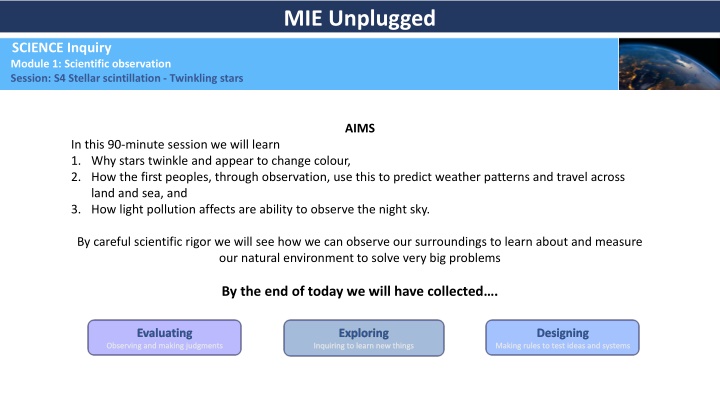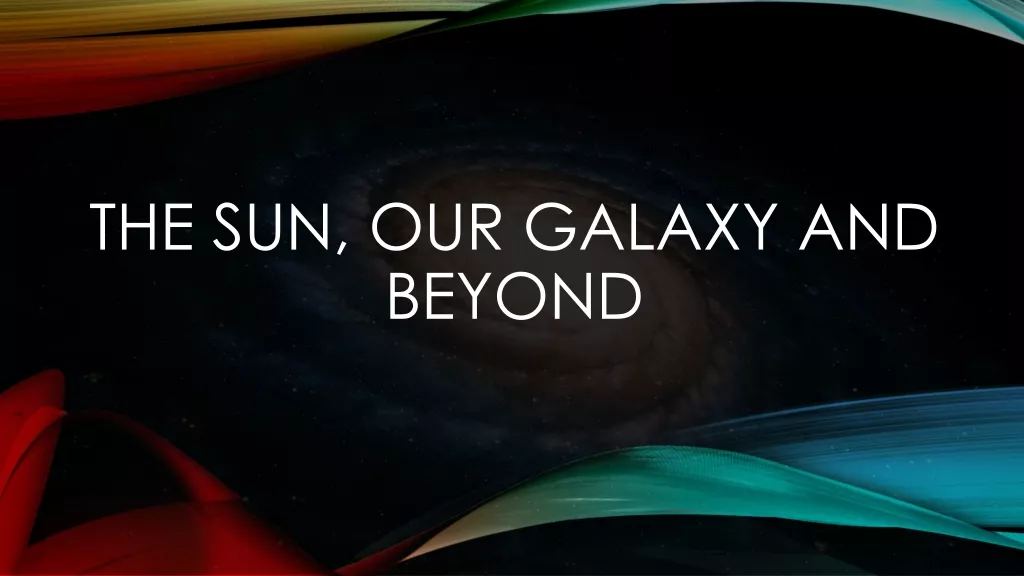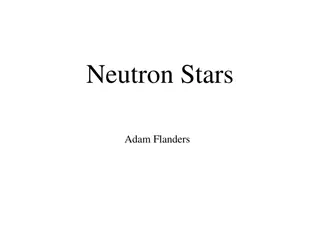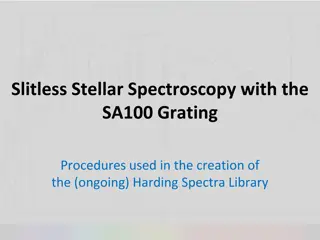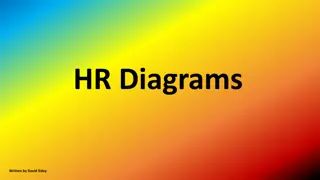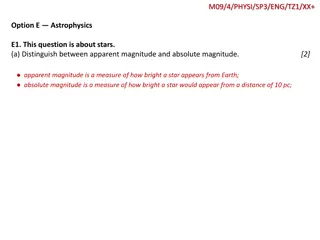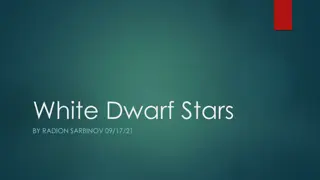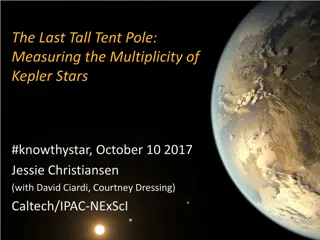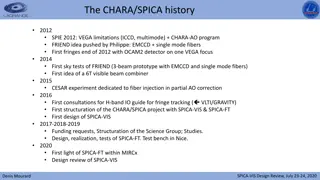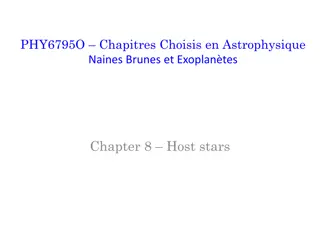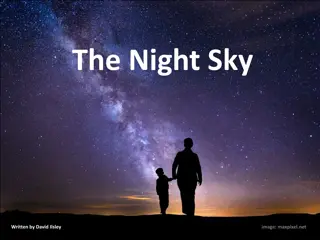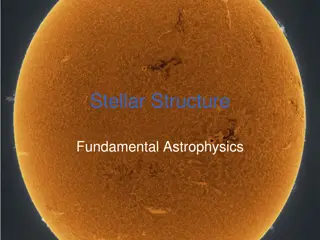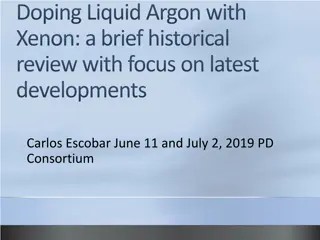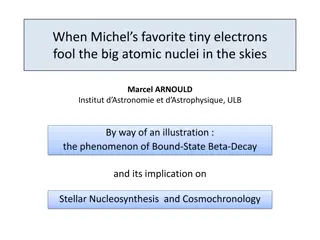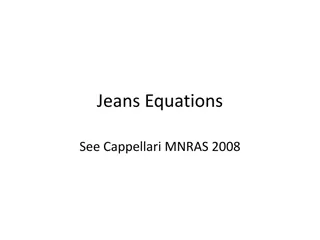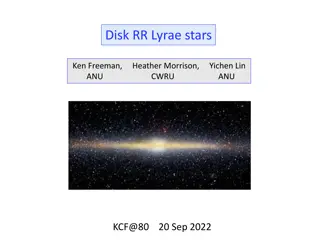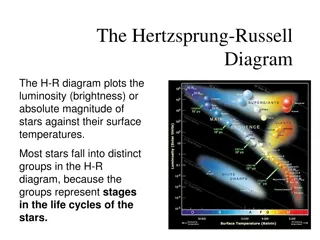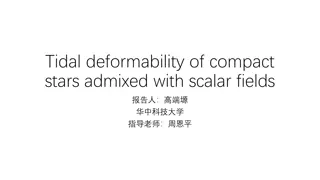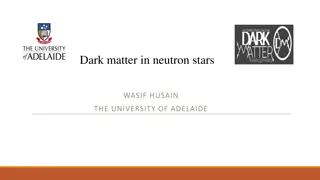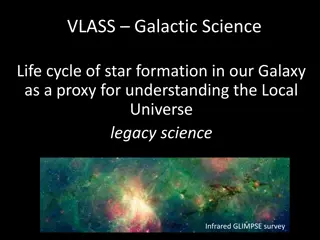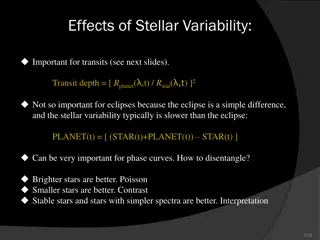Stellar Scintillation: Unveiling the Twinkling Stars
Delve into the mesmerizing phenomenon of stars twinkling in the night sky in this scientific observation session. Explore why stars twinkle, how ancient civilizations utilized this knowledge, and the impact of light pollution on stargazing. Through rigorous scientific inquiry, discover the secrets of atmospheric refraction and its influence on starlight. Unravel the layers of Earth's atmosphere and the bending of light as it travels through space. Join us to witness the beauty and complexity of stellar scintillation as we bridge the gap between ancient wisdom and modern scientific understanding.
Download Presentation

Please find below an Image/Link to download the presentation.
The content on the website is provided AS IS for your information and personal use only. It may not be sold, licensed, or shared on other websites without obtaining consent from the author.If you encounter any issues during the download, it is possible that the publisher has removed the file from their server.
You are allowed to download the files provided on this website for personal or commercial use, subject to the condition that they are used lawfully. All files are the property of their respective owners.
The content on the website is provided AS IS for your information and personal use only. It may not be sold, licensed, or shared on other websites without obtaining consent from the author.
E N D
Presentation Transcript
MIE Unplugged SCIENCE Inquiry Module 1: Scientific observation Session: S4 Stellar scintillation - Twinkling stars AIMS In this 90-minute session we will learn 1. Why stars twinkle and appear to change colour, 2. How the first peoples, through observation, use this to predict weather patterns and travel across land and sea, and 3. How light pollution affects are ability to observe the night sky. By careful scientific rigor we will see how we can observe our surroundings to learn about and measure our natural environment to solve very big problems By the end of today we will have collected . Evaluating Designing Exploring Observing and making judgments Making rules to test ideas and systems Inquiring to learn new things
MIE Unplugged SCIENCE Inquiry Module 1: Scientific observation Session: S4 Stellar scintillation - Twinkling stars Evaluating Observing and making judgments Have you ever noticed how stars sometimes twinkle in the night sky? Can you think of why this happens? How long ago do you think humans noticed this and how do you think we used this knowledge?
MIE Unplugged SCIENCE Inquiry Module 1: Scientific observation Session: S4 Stellar scintillation - Twinkling stars Why do stars twinkle? Evaluating Observing and making judgments Stars twinkle because of a scientific phenomena known as Atmospheric refraction Exploring Inquiring to learn new things The scientific word for twinkling is scintillation EARTH
MIE Unplugged SCIENCE Inquiry Module 1: Scientific observation Session: S4 Stellar scintillation - Twinkling stars Why do stars twinkle? Evaluating Observing and making judgments The Earth s atmosphere is made up of different layers Exploring Inquiring to learn new things These layers are different in density, temperature and water content EARTH
MIE Unplugged SCIENCE Inquiry Module 1: Scientific observation Session: S4 Stellar scintillation - Twinkling stars Why do stars twinkle? Evaluating Observing and making judgments Light emitted from the star travels through the vacuum of space in a straight line Exploring Inquiring to learn new things EARTH
MIE Unplugged SCIENCE Inquiry Module 1: Scientific observation Session: S4 Stellar scintillation - Twinkling stars Why do stars twinkle? Evaluating Observing and making judgments When the light reaches our upper atmosphere is slows down and its path bends or refracts Exploring Inquiring to learn new things EARTH
MIE Unplugged SCIENCE Inquiry Module 1: Scientific observation Session: S4 Stellar scintillation - Twinkling stars Why do stars twinkle? Evaluating Observing and making judgments Every time the light reaches other layer of the Earth s atmosphere it bends or refracts some more Exploring Inquiring to learn new things EARTH
MIE Unplugged SCIENCE Inquiry Module 1: Scientific observation Session: S4 Stellar scintillation - Twinkling stars Why do stars twinkle? Evaluating Observing and making judgments Let s take a closer look! Gases in these layers are moving very fast all the time Exploring Inquiring to learn new things Atmosphere layer
MIE Unplugged SCIENCE Inquiry Module 1: Scientific observation Session: S4 Stellar scintillation - Twinkling stars Why do stars twinkle? Evaluating Observing and making judgments Let s take a closer look! Gases in these layers are moving very fast all the time Exploring Inquiring to learn new things Atmosphere layer These moving layers refract the light to different extents so different amounts of light reaches your eyes every second and the star appears to dim and brighten (scintillation) or twinkle
MIE Unplugged SCIENCE Inquiry Module 1: Scientific observation Session: S4 Stellar scintillation - Twinkling stars Exploring Inquiring to learn new things Let s put this into practice with a couple of experiments! Designing Experiment 1: Modelling atmospheric refraction Making rules to test ideas and systems Work in groups of 2 You will need: 3 glasses/plastic bottles The arrow print out The data collection sheet A 30 cm ruler
MIE Unplugged SCIENCE Inquiry Module 1: Scientific observation Session: S4 Stellar scintillation - Twinkling stars Experiment 1: Modelling atmospheric refraction Exploring Inquiring to learn new things We are going to model the different layers in the atmosphere and then see what happens to light when it passes through them. Designing Making rules to test ideas and systems The different layers of the atmosphere have different amounts of gases and water in them. These layers act like lenses, focusing or bending the light in different directions. We can see this same affect when light passes through a glass or bottle of water.
MIE Unplugged SCIENCE Inquiry Module 1: Scientific observation Session: S4 Stellar scintillation - Twinkling stars Experiment 1: Modelling atmospheric refraction Exploring Inquiring to learn new things Imagine we are looking at a star in the night sky. The light from the star will pass through the atmospheric layers before entering our eye. Designing Making rules to test ideas and systems We can model this light as arrows We can then model these atmospheric layers with glasses/bottles of water.
MIE Unplugged SCIENCE Inquiry Module 1: Scientific observation Session: S4 Stellar scintillation - Twinkling stars Experiment 1: Modelling atmospheric refraction Exploring Inquiring to learn new things The light travels in a straight line in space Designing Making rules to test ideas and systems Each time the light has to travel through a new medium (i.e. water or air) it will bend or refract It will the bend or refract when it enters the first layer in our atmosphere (the water bottle) and will then bend again when it exits the water bottle into the air
MIE Unplugged SCIENCE Inquiry Module 1: Scientific observation Session: S4 Stellar scintillation - Twinkling stars Experiment 1: Modelling atmospheric refraction Exploring Let s see this in action! Inquiring to learn new things Fill the 1st bottle or glass with water up to the bottom arrow and place a rule length from the arrows. Designing Making rules to test ideas and systems Start approximately 30cm away. Look at the arrows through the water, moving back until you see the bottom arrow clearly, and mark down on your data collection sheet the orientation of the arrows.
MIE Unplugged SCIENCE Inquiry Module 1: Scientific observation Session: S4 Stellar scintillation - Twinkling stars Experiment 1: Modelling atmospheric refraction Exploring Inquiring to learn new things Designing Making rules to test ideas and systems Fill the 2nd bottle or glass with water up to the middle arrow and place in behind the 1st bottle. Look at the arrows through the water and mark down on your data collection sheet the orientation of the arrows
MIE Unplugged SCIENCE Inquiry Module 1: Scientific observation Session: S4 Stellar scintillation - Twinkling stars Experiment 1: Modelling atmospheric refraction Exploring Inquiring to learn new things Fill the 3rd bottle or glass with water up to the top arrow and place in behind the 2nd bottle. Designing Making rules to test ideas and systems Look at the arrows through the water and mark down on your data collection sheet the orientation of the arrows.
MIE Unplugged SCIENCE Inquiry Module 1: Scientific observation Session: S4 Stellar scintillation - Twinkling stars Experiment 1: Modelling atmospheric refraction Exploring Now let s see your results! Inquiring to learn new things 1st atmospheric layer 2nd atmospheric layer 3rd atmospheric layer Original Designing Making rules to test ideas and systems You should see the arrows change direction when you add in more atmospheric layers
MIE Unplugged SCIENCE Inquiry Module 1: Scientific observation Session: S4 Stellar scintillation - Twinkling stars Experiment 1: Modelling atmospheric refraction Evaluating Observing and making judgments Exploring How do your results compare with other groups? Inquiring to learn new things Does the shape of the water bottle affect the results? Designing Making rules to test ideas and systems If the water bottles represent the moving atmospheric layers, how will this affect the amount of star light entering your eyes?
MIE Unplugged SCIENCE Inquiry Module 1: Scientific observation Session: S4 Stellar scintillation - Twinkling stars Evaluating Observing and making judgments In a minute we are going to go outside and perform 2 more experiments Exploring Inquiring to learn new things Experiment 2: Measuring the amount light refracts Designing Making rules to test ideas and systems Experiment 3: Splitting light But first we are going to see what we need to do!
MIE Unplugged SCIENCE Inquiry Module 1: Scientific observation Session: S4 Stellar scintillation - Twinkling stars Experiment 2: Measuring the amount light refracts Exploring Inquiring to learn new things In the same groups of 2 Designing Making rules to test ideas and systems 1 1. On a blank piece of paper draw around your fullest water bottle/glass
MIE Unplugged SCIENCE Inquiry Module 1: Scientific observation Session: S4 Stellar scintillation - Twinkling stars Experiment 2: Measuring the amount light refracts Exploring Inquiring to learn new things In the same groups of 2 Designing Making rules to test ideas and systems 2 1. On a blank piece of paper draw around your water bottle/glass 2. Mark 3 lines next to the circle as shown. Label this as Data collection sheet 2
MIE Unplugged SCIENCE Inquiry Module 1: Scientific observation Session: S4 Stellar scintillation - Twinkling stars Experiment 2: Measuring the amount light refracts Exploring Inquiring to learn new things 3 In the same groups of 2 Designing Making rules to test ideas and systems 1. On a blank piece of paper draw around your water bottle/glass slit 2. Mark 3 lines next to the circle as shown. Label this as Datacollection sheet 2 3. On a piece of black card ~10-15cm from the bottom use a pin to put holes in a line to make a slit (0.5cm) and then draw a line straight down to the edge and cut a notch as shown 10 - 15cm notch
MIE Unplugged SCIENCE Inquiry Module 1: Scientific observation Session: S4 Stellar scintillation - Twinkling stars Experiment 2: Measuring the amount light refracts Exploring In the same groups of 2 Inquiring to learn new things 4 4. Place Data collection sheet 2 on the flat ground in direct sunlight. Then place the notch of the black card on the centre line and angle towards the sun. Designing Making rules to test ideas and systems slit notch
MIE Unplugged SCIENCE Inquiry Module 1: Scientific observation Session: S4 Stellar scintillation - Twinkling stars Experiment 2: Measuring the amount light refracts Exploring In the same groups of 2 Inquiring to learn new things 5 4. Place Data collection sheet 2 on the flat ground in direct sunlight. Then place the notch of the black card on the centre line and angle towards the sun. Designing Making rules to test ideas and systems slit 5. Mark where the sunlight hits the paper and label with an M for middle line. notch M
MIE Unplugged SCIENCE Inquiry Module 1: Scientific observation Session: S4 Stellar scintillation - Twinkling stars Experiment 2: Measuring the amount light refracts Exploring In the same groups of 2 Inquiring to learn new things 6 4. Place Data collection sheet 2 on the flat ground in direct sunlight. Then place the notch of the black card on the centre line and angle towards the sun. Designing Making rules to test ideas and systems slit 5. Mark where the sunlight hits the paper and label with an M for middle line. 6. Move the black card and place the notch over the two other lines in turn and again mark where the light hits the card, this time with an L for left and R for right notch R M L
MIE Unplugged SCIENCE Inquiry Module 1: Scientific observation Session: S4 Stellar scintillation - Twinkling stars Experiment 2: Measuring the amount light refracts Exploring In the same groups of 2 Inquiring to learn new things 7 7. Change colour pens, place the water bottle in the circle and repeat marking where the light hits the paper when placing the notches on the different lines Designing Making rules to test ideas and systems slit Remember to label M, R and L again so you can follow the light! notch
MIE Unplugged SCIENCE Inquiry Module 1: Scientific observation Session: S4 Stellar scintillation - Twinkling stars Experiment 3: Splitting light Exploring Inquiring to learn new things For experiment 3 we are going to split light into the different colours that make up white light Designing Making rules to test ideas and systems 1 slit In groups of 2 you will need the fullest bottle of water again and Data collection sheet 3. 1. Place the bottle of water on the flat ground in sunlight. notch
MIE Unplugged SCIENCE Inquiry Module 1: Scientific observation Session: S4 Stellar scintillation - Twinkling stars Experiment 3: Splitting light Exploring Inquiring to learn new things For experiment 3 we are going to split light into the different colours that make up white light. Designing Making rules to test ideas and systems 2 In groups of 2 you will need the fullest bottle of water again and Data collection sheet 3 slit 1. Place the bottle of water on the flat ground in sunlight 2. Observe the shadow the water casts and write down the colours you see in order from top to bottom in Data collection sheet 3 notch
MIE Unplugged SCIENCE Inquiry Module 1: Scientific observation Session: S4 Stellar scintillation - Twinkling stars Exploring Inquiring to learn new things We are now going to go outside and perform experiment 2 and 3! Designing In groups of 2 you will need to take: Making rules to test ideas and systems 1. Data collection sheet 2 slit 2. Data collection sheet 3 3. The black card 4. Bottle of water 5. 2 pens of different colours notch
MIE Unplugged SCIENCE Inquiry Module 1: Scientific observation Session: S4 Stellar scintillation - Twinkling stars Evaluating Experiment 2 results Observing and making judgments In your groups come up and draw your results on the board Exploring Inquiring to learn new things 1. What happened to the light when it passed through the bottle of water? slit Designing 2. How does this relate to star light passing through the Earth s atmosphere layers? Making rules to test ideas and systems 3. Can you explain what is scintillation - why stars appear to twinkle? 4. Why do stars appear to twinkle more on some nights and not others? notch
MIE Unplugged SCIENCE Inquiry Module 1: Scientific observation Session: S4 Stellar scintillation - Twinkling stars Why do they appear to twinkle more on some nights and not others? Evaluating Observing and making judgments Gases in the atmospheric layers are moving very fast all the time. Exploring Inquiring to learn new things Atmosphere layer Different weather events in the Troposphere layer contain moving pockets of cold or warm air, some with more water and some with less water, and therefore these pockets refract the light differently. Could we use this fact to predict the weather at night?
MIE Unplugged SCIENCE Inquiry Module 1: Scientific observation Session: S4 Stellar scintillation - Twinkling stars Evaluating Experiment 3 results Observing and making judgments In your groups come up and draw your results on the board. Exploring Inquiring to learn new things 1. What order do the colours of light appear in? slit Designing 2. Do they always appear in the same order? Making rules to test ideas and systems 3. Why do we see all the colours in the rainbow when light refracts? 4. Why do we always see them in the same order? notch
MIE Unplugged SCIENCE Inquiry Module 1: Scientific observation Session: S4 Stellar scintillation - Twinkling stars Evaluating Experiment 3 results Observing and making judgments You can think of light travelling through our atmosphere as a wave. Exploring Inquiring to learn new things slit All the different colours that we can see have different wavelengths The shorter the wavelength of the light, the more it is refracted. As a result, red light is refracted the least and violet and blue light is refracted the most - causing the coloured light to spread out to form a spectrum. notch
MIE Unplugged SCIENCE Inquiry Module 1: Scientific observation Session: S4 Stellar scintillation - Twinkling stars Exploring Cultures around the world have observed that scintillation or a star s twinkle is linked to the weather and seasons. Inquiring to learn new things Torres Strait Islanders carefully observe the different ways the stars twinkle, including their speed, any colour changes, and sharpness of stars. This is used to predict changes in the weather, foretell seasonal change and animal behaviour. slit High turbulence from hot, fast winds result in very rapid twinkling stars, whereas stars visible in cooler, calmer conditions shine with a relatively steady light. Check out this website for more information https://indigenousknowledge.unimelb.edu.au/curriculum/resources/stellar-scintillation notch
MIE Unplugged SCIENCE Inquiry Module 1: Scientific observation Session: S4 Stellar scintillation - Twinkling stars Exploring Cultures around the world have observed that scintillation or a star s twinkle is linked to the weather and seasons. Inquiring to learn new things Elders explain that Meriam people also look for colour changes in bright stars as they twinkle. Normally red stars appearing bluish in colour indicate humidity. If the stars are twinkling rapidly, appear blue, and look fuzzy, they know a storm is approaching. slit notch https://indigenousknowledge.unimelb.edu.au/curriculum/resources/stellar-scintillation
MIE Unplugged SCIENCE Inquiry Module 1: Scientific observation Session: S4 Stellar scintillation - Twinkling stars Exploring Cultures around the world have observed that scintillation or a star s twinkle is linked to the weather and seasons. Inquiring to learn new things Elders explain that blue twinkling stars that do not change colour indicate clear, hot weather. This is common during the Nay Gay (hot/humid) season from October to December. slit notch https://indigenousknowledge.unimelb.edu.au/curriculum/resources/stellar-scintillation
MIE Unplugged SCIENCE Inquiry Module 1: Scientific observation Session: S4 Stellar scintillation - Twinkling stars Exploring Cultures around the world have observed that scintillation or a star s twinkle is linked to the weather and seasons. Inquiring to learn new things Stars twinkling rapidly but appearing blue in colour indicate approaching storms that are common in the Kuki (monsoon) season from January to April. slit notch https://indigenousknowledge.unimelb.edu.au/curriculum/resources/stellar-scintillation
MIE Unplugged SCIENCE Inquiry Module 1: Scientific observation Session: S4 Stellar scintillation - Twinkling stars Exploring Cultures around the world have observed that scintillation or a star s twinkle is linked to the weather and seasons. Inquiring to learn new things Near the boundary of these seasons (December), Islanders watch for rapidly twinkling stars when ground conditions are pretty still. This is a sign of the changing trade winds, shifting from the cooler south- easterlies to the hot, wet north-westerlies. slit notch https://indigenousknowledge.unimelb.edu.au/curriculum/resources/stellar-scintillation
MIE Unplugged SCIENCE Inquiry Module 1: Scientific observation Session: S4 Stellar scintillation - Twinkling stars Exploring Inquiring to learn new things How does the local community in your area use the stars to navigate our world? slit notch
